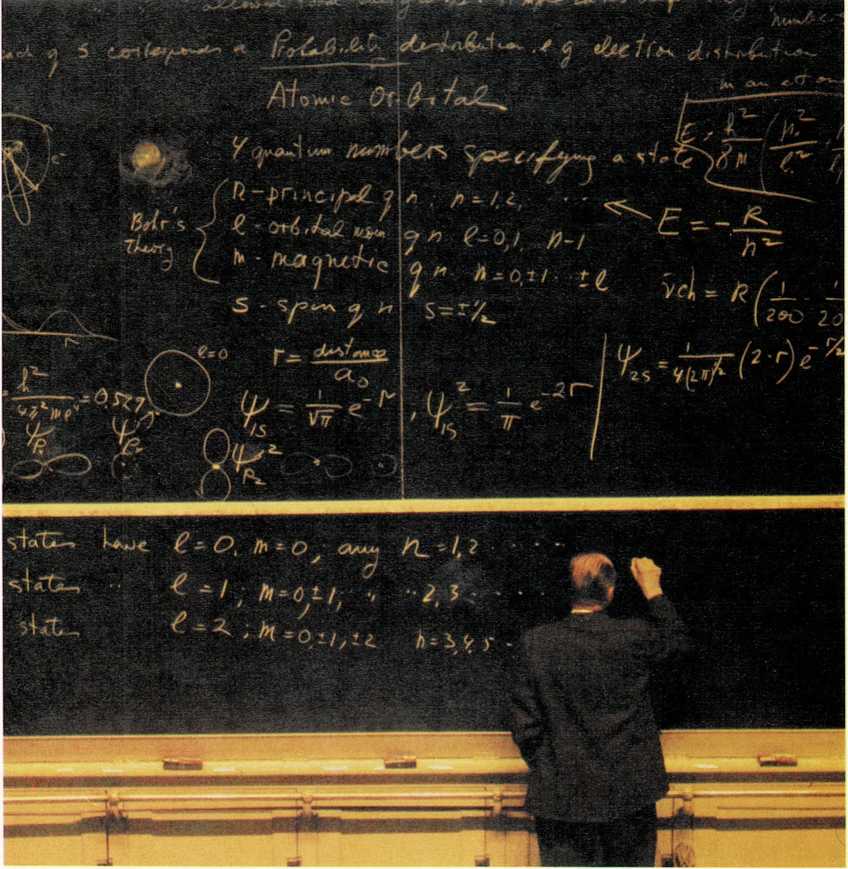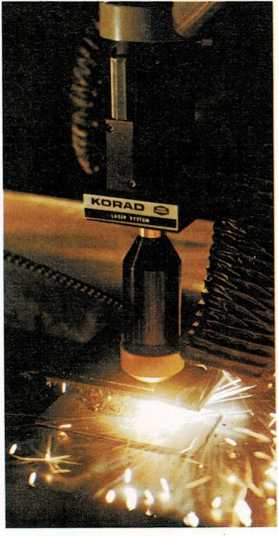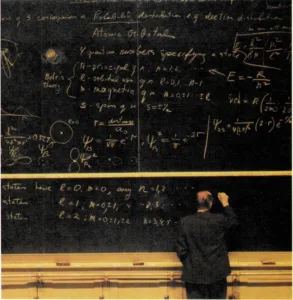
Scientists called physicists use a lot of mathematics in their work.
As you can see, they use letters and symbols more often than numbers.
Atoms, electrons, forces
On a desert in New Mexico, a large number of people crowded into a
small, underground shelter made of thick concrete. Some distance away
stood a tall, pointed tower made of steel girders. At the top of this
tower was a little machine that was going to make history.
It was five-thirty in the morning, and dawn was just breaking over the
desert. Suddenly, a tremendous flash lit up the desert for miles I The
steel tower vanished in a puff of smoke I There was a terrible noise,
like the loudest
roar of thunder ever heard. A huge cloud of fire, six miles (9.6
kilometers) high, could be seen 180 miles (290 kilometers) away!
This happened in 1945. The people in the underground building had just
exploded the first atomic bomb.
Many of the people who worked on the first atomic bomb were the kind of
scientists called physicists [(fihz]{.smallcaps} uh sihsts). The science
they work at is called physics [(fihz]{.smallcaps} ihks). Physics is the
study of matter and energy. It is a way of finding out what makes
nonliving things work.
Physicists study the behavior of atoms, out of which everything, from
stars to people, is made. Physicists also study such things as motion,
heat, and light, as well as forces, such as gravity, electricity, and
magnetism. The work and discoveries of physicists have helped give us
such things as nuclear energy, X rays, radio and television,
refrigeration and air conditioning, and much, much more.
And much of the work of physicists—nearly all of it sometimes—is
done with mathematics. However, the mathematics that physicists use
isn’t much like the arithmetic you’re familiar with. Physicists seldom
use numerals. They use letters and symbols that stand for ideas and
forces. For example, the mathematical equation that showed physicists
that they could release atomic energy looks like this: E = me^2^.
This equation may not look like much to you, but it led to the atomic
age. Actually, this mathematical “sentence,” or equation, says, “Energy
[power] is equal to mass [an amount of material] multiplied by the
speed of light squared.” Perhaps you can’t understand the equation—but
a physicist can!

Physicists are scientists who use mathematics to study light, sound, and
other things. From their work has come machines such as this one, called
a laser, which can cut metal with a beam of light!

